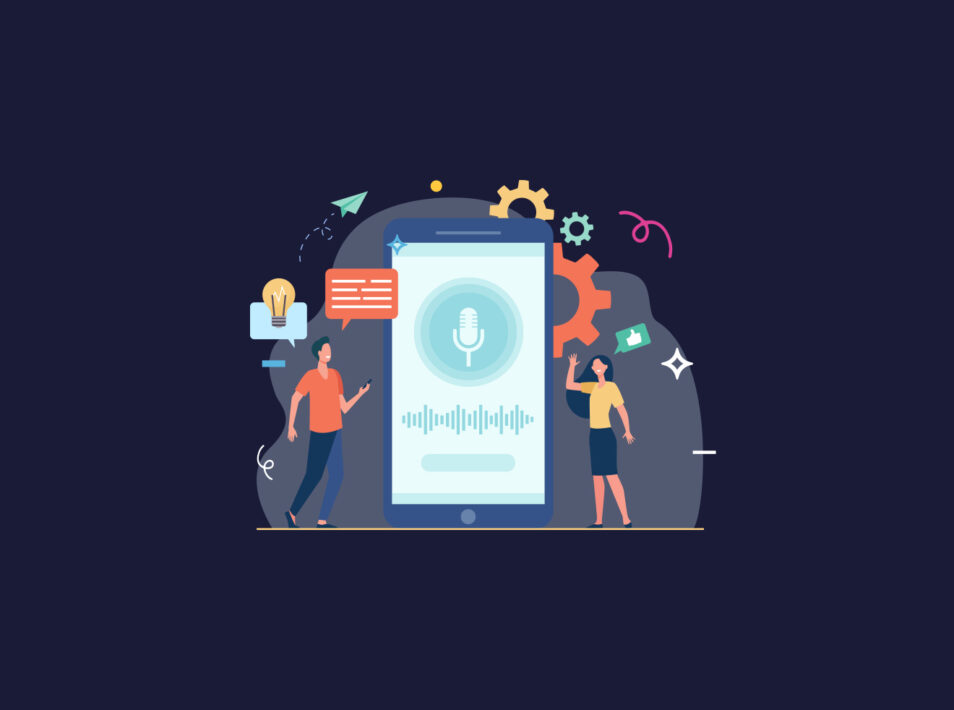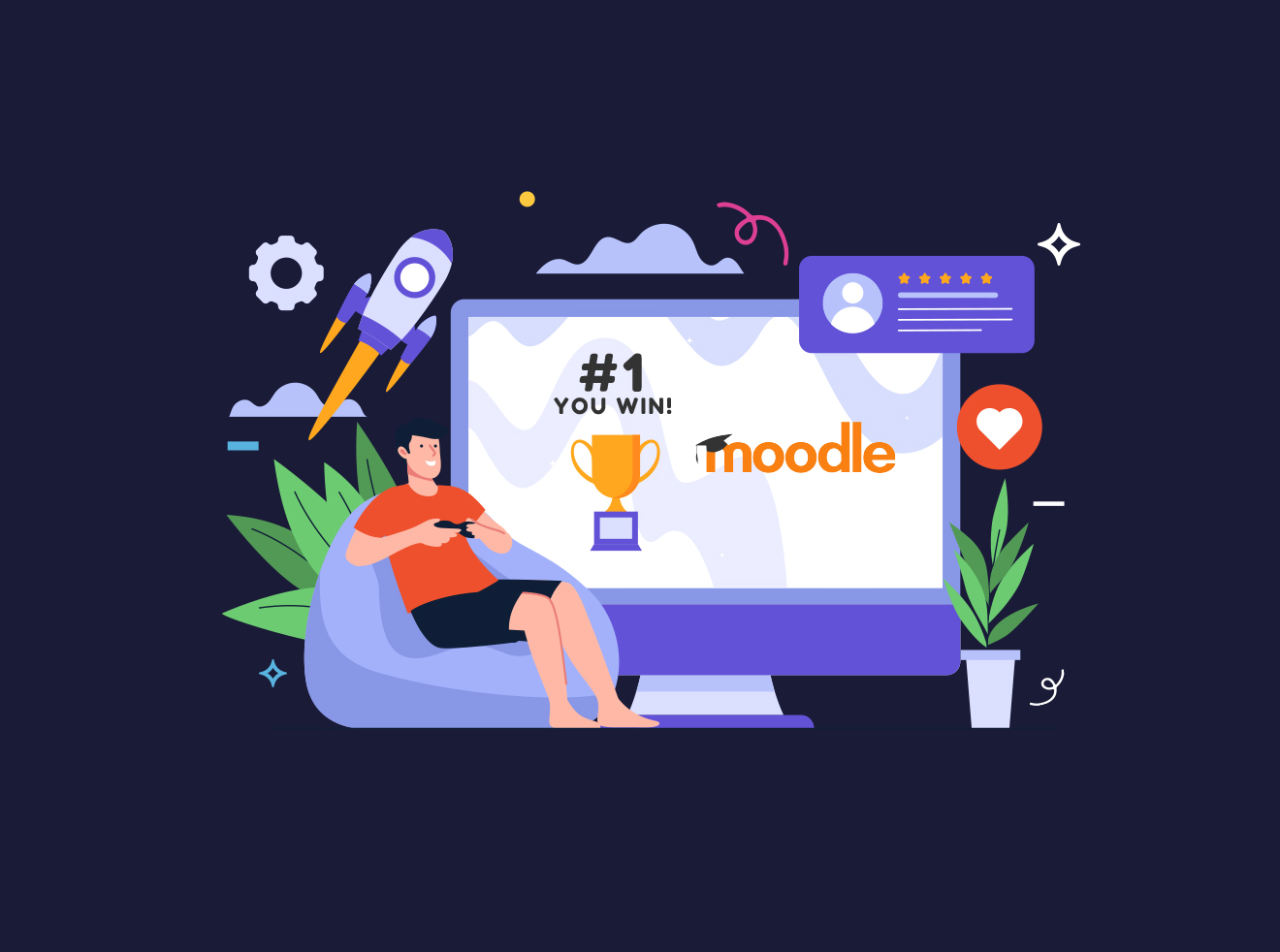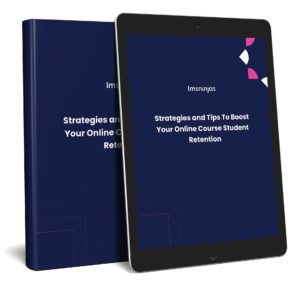In the world of online education, the tools we use to captivate our learners are of paramount importance. As an educator or content creator, knowing how to leverage different types of media can make a great difference in the effectiveness of your courses.
For example, audio, often an underrated component, can transform a student’s experience, especially when integrated with platforms like LearnDash LMS. This article delves into the dynamic interplay of audio and online courses, guiding you through its practical applications and inherent advantages.
What are the benefits of using audio in online courses?
Using audio in LearnDash online courses can bring many benefits that can enhance the overall learning experience for your students.
In today’s world of online education, making the most of every tool at your disposal is essential. Here are the key advantages of incorporating audio into your online courses:
Enhancing Engagement and Attention
One of the most significant advantages of using audio in your LearnDash courses is its ability to capture and sustain learners’ engagement and attention.
Unlike text-based content, audio has the power to convey emotions, tone, and enthusiasm, making the course materials more relatable and enjoyable.
When learners hear a friendly voice explaining complex concepts or sharing personal experiences, they are more likely to stay focused and retain the information.
Moreover, audio can break the monotony of reading lengthy text blocks. It offers variety and interactivity, keeping learners actively involved in the course.
For instance, you can use audio to introduce quizzes or interactive discussions, encouraging students to participate and contribute actively.
Improving Accessibility and Inclusivity
Audio is also crucial in making online courses accessible and inclusive to a wider audience. Not all learners have the same abilities or preferences when it comes to absorbing information.
Some may struggle with reading disabilities, while others may prefer auditory learning, and by incorporating audio elements, you cater to diverse learning styles, ensuring that your course content is accessible to everyone.
Learners who have difficulty reading or comprehending written text can benefit immensely from audio narration. Also, non-native English speakers may find it easier to understand complex topics when presented in audio format with clear pronunciation and pacing.
Furthermore, audio can be a game-changer for learners with visual impairments. Screen readers can easily interpret audio content, allowing visually impaired individuals to access and engage with your course materials.
This not only fulfills accessibility requirements but also demonstrates your commitment to inclusivity.
Retention
When it comes to online learning, retaining information is a top priority. Audio can significantly contribute to improved retention rates among your learners. When they hear information instead of just reading it, it creates a multi-sensory experience that reinforces memory retention.
Additionally, audio content can be more conversational and relatable, which helps learners connect with the material on a personal level. When learners feel a sense of connection, they are more likely to remember what they’ve learned and apply it effectively.
Incorporating audio quizzes or summaries at the end of lessons can also enhance retention. These audio cues can serve as valuable review tools, reinforcing key points and helping learners recall essential information when needed.
Personalized Learning
Another standout advantage of using audio in online courses is its ability to cater to various learning styles.
Students have different preferences when it comes to how they absorb and retain information. Some are visual learners, while others are more auditory or kinesthetic in their approach.
Incorporating audio elements into your LearnDash courses creates a personalized learning experience that accommodates a broader range of learners.
Audio content can include narrated lessons, podcasts, or short audio clips summarizing key points.
For auditory learners, these elements can be invaluable in helping them grasp and retain the course material more effectively.
Additionally, providing options for audio content alongside traditional text-based materials ensures that each student can choose the format that best suits their learning style.
Easier Learning on Mobile
In today’s fast-paced world, many students are constantly on the move. Whether commuting, running errands, or simply enjoying a walk, people often find themselves away from their desktop or laptop computers. This is where audio in online courses truly shines.
Audio content can be easily accessed on mobile devices, making it a convenient option for students who prefer to learn on the go.
Allowing students to download audio lessons or podcasts gives them the flexibility to continue their coursework during their daily activities.
This versatility not only enhances the learning experience but also makes it more convenient for busy individuals to fit education into their schedules.
Moreover, audio content can be especially beneficial for learners with visual impairments or those with difficulty reading lengthy texts on smaller screens. It ensures that your online course is inclusive and accessible to a wider audience.
Incorporating audio into your LearnDash online courses can revolutionize how your students engage with the material. It provides a personalized learning experience, catering to different learning styles, and offers the flexibility of on-the-go learning.
By harnessing the power of audio, you can make your courses more accessible and effective, ultimately enhancing the overall educational experience for your students.
So, whether it’s narrated lessons, informative podcasts, or engaging audio quizzes, don’t underestimate the impact of audio in online education. It’s a powerful tool that can elevate your LearnDash courses to a new level of excellence.
Best Practices for Incorporating Audio in LearnDash Courses
To enhance the learning experience, educators are increasingly turning to audio as a valuable addition to their course materials. Below are some of the best practices for incorporating audio into LearnDash courses, ensuring that students get the most out of their online learning journey without any unnecessary complexity.
Use audio in assignments (accepting recorded assignments):
One effective way to integrate audio into your LearnDash courses is by allowing students to submit recorded assignments.
This approach caters to different learning styles and fosters creativity and engagement. Students can demonstrate their understanding of the subject matter through spoken explanations, presentations, or discussions, which can be especially valuable in subjects that require verbal communication skills.
Scenario-Based Dialogues:
Another practical application of audio in LearnDash courses is the integration of scenario-based dialogues. These dialogues take the form of interactive role-playing exercises that simulate real-life situations.
Through audio, students can actively participate in these scenarios, applying their knowledge and honing decision-making skills. The beauty of audio dialogues lies in their ability to immerse learners within the scenario, creating a more engaging and memorable learning experience.
As students navigate these lifelike situations, they not only grasp theoretical concepts but also gain practical insights, fostering a deeper understanding of the subject matter. This interactive approach encourages active participation and critical thinking, making audio-driven scenario-based dialogues a valuable addition to any LearnDash course.
Provide students with audio recordings of lectures:
Offering audio recordings of lectures can be a game-changer for online learners. Not all students have the luxury of attending live sessions, and providing audio recordings ensures that they can access course content at their convenience. This flexibility promotes self-paced learning and accommodates students with diverse schedules and learning preferences.
Use audio to improve pronunciation and spoken understanding in language courses:
In language courses, audio can be a powerful tool for enhancing pronunciation and spoken comprehension.
Including audio clips of native speakers or pronunciation exercises can help students develop their oral language skills. It provides learners with real-world examples and allows them to practice their own pronunciation in a supportive environment.
Audio Feedback for Assessments and Quizzes:
When it comes to assessments and quizzes in LearnDash courses, consider incorporating audio feedback. Instead of relying solely on written feedback, instructors can provide personalized audio feedback, offering a more nuanced and empathetic approach.
Hearing their instructor’s voice can make the feedback process feel more interactive and supportive, fostering a positive learning environment.
Engage Learners with Podcasts and Recorded Interviews:
One of the best ways to leverage audio in your LearnDash online courses is by incorporating podcasts or recorded interviews.
This approach adds a dynamic and interactive element to your course content. You can invite subject matter experts or industry professionals to share their insights, experiences, and knowledge through interviews or podcast-style discussions.
These audio segments can serve as valuable supplementary materials that provide a real-world perspective, making the learning experience more engaging and relatable for your students.
Utilize Recorded Songs for Enhanced Memorization:
Another effective strategy is to use recorded songs to help learners remember key facts, formulas, or concepts.
Music has a powerful impact on memory retention, and creating catchy educational tunes can make learning more enjoyable and memorable.
Whether it’s a mnemonic jingle for math formulas or a catchy song to remember historical dates, incorporating audio in this way can turn complex subjects into something fun and easy to remember.
Provide Audio Summaries at the End of Modules or Lessons:
Audio summaries can be a game-changer in online courses. At the end of each module or lesson, consider providing a concise audio summary that recaps the main points and takeaways. This reinforcement helps learners solidify their understanding of the material and serves as a quick refresher before moving on to the next topic.
These summaries should be clear, concise, and to the point, ensuring that learners can easily grasp the key concepts.
Analyze Historical Speeches and Recordings for Context:
Incorporating famous speeches or recordings of historical events can be a valuable teaching tool for history or politics courses.
These audio resources offer a glimpse into the past and provide context for the events and figures being studied.
Analyzing speeches by influential leaders or listening to recordings of significant moments in history can spark meaningful discussions and critical thinking among your learners. It adds a layer of authenticity and depth to your course content.
Incorporating audio into your LearnDash online courses can significantly enhance the learning experience. Whether it’s through podcasts, catchy songs, concise summaries, or historical recordings, audio elements can engage learners, improve retention, and add depth to your course materials.
Producing quality audio recordings
To create effective audio content for your LearnDash online courses, it’s essential to focus on a few key elements that can make a significant difference.
Here are the best ways to utilize audio effectively in your eLearning materials, specifically within the LearnDash Learning Management System (LMS).
Clear and Concise Scripting
The foundation of any great audio content is a clear and concise script. Your script should be written in a way that is easy for both the instructor and the learners to understand.
Use simple and straightforward language, avoiding complex jargon or technical terms that might confuse your audience.
Break down complex ideas into smaller, digestible pieces, and maintain a consistent tone throughout the course.
Background Music and Sound Effects
Adding background music and sound effects can elevate the engagement level of your online course. However, it’s essential to use these elements judiciously.
The background music should complement the content without overpowering it. Select music that is not distracting and maintains a pleasant ambiance.
When using sound effects, ensure they enhance the learning experience and are relevant to the topic. Avoid using excessive or loud effects that might disrupt the course flow.
Transcripts and Captions
Transcripts and captions are essential for making your audio content accessible to all learners, including those with hearing impairments or those who prefer to read along.
Providing transcripts allows students to review the content in written form, reinforcing their understanding.
On the other hand, captions are particularly useful for videos and can improve comprehension for learners who benefit from visual reinforcement.
In addition to accessibility, transcripts, and captions also have SEO benefits. Search engines can index the text within your transcripts and captions, making your course content more discoverable to a broader audience.
When creating transcripts and captions, ensure accuracy and synchronize them properly with the audio to provide a seamless learning experience.
By following these best practices, you can enhance the educational experience for your learners and make your online courses more engaging and effective.
Tools and Resources for Audio Creation in LearnDash
When it comes to creating audio content for your LearnDash courses, having the right tools at your disposal is crucial. Here are some essential resources to get you started:
1. Recommended Microphones and Recording Software
Creating high-quality audio content begins with choosing the right microphone and recording software. A USB microphone like the Blue Yeti or Audio-Technica ATR2100x-USB is an excellent choice for those just starting.
These mics offer good sound quality without breaking the bank. As for recording software, Audacity is a free and user-friendly option, while Adobe Audition and GarageBand are more advanced choices for those seeking additional features.
2. Plugins – Adding Audio to Lessons, Assignments, Quizzes
LearnDash offers robust functionality through plugins, and integrating audio into your course content is no exception. There are several LearnDash-compatible plugins available that make it a breeze to incorporate audio into lessons, assignments, and quizzes.
One such plugin is the “LearnDash Audio Assignments” plugin from Wooninjas. This handy tool simplifies the process of adding audio assignments to your courses, allowing students to listen to and engage with course material in a dynamic way.
Additionally, you can explore other plugins like “LearnDash Audio Player” to effortlessly embed audio files into your course content.
3. Music and Sound Effects
To add a layer of engagement and immersion to your LearnDash courses, consider incorporating background music or sound effects strategically. These elements can create a more captivating learning atmosphere.
There are numerous royalty-free music libraries and sound effects websites available, such as Free Music Archive and Freesound.org, where you can find audio assets to enhance your courses without worrying about copyright issues.
Harnessing the power of audio in LearnDash online courses can greatly improve the overall learning experience for your students.
By investing in the right tools, leveraging plugins like the one offered by Wooninjas.com, and incorporating audio elements such as music and sound effects, you can create engaging and informative course content that resonates with your audience.
So, go ahead and explore these audio options within LearnDash to take your e-learning courses to the next level.
Audio for eLearning
Using audio in LearnDash online courses can make a big difference. It can help keep students interested, make the course easier for everyone to use, and help students remember the content better. Plus, students can listen to courses on their phones, which is handy.
To get the most from audio, it’s a good idea to keep the speech clear and short, not to overdo music or sounds, and to have written versions (like transcripts) available. Using good microphones, the right recording tools, and helpful plugins, will make adding audio a breeze. If you need help adding audio and other interactive elements to your online course, don’t hesitate to contact our LMS experts. We’ll help you find and configure the best tools for your eLearning site.




